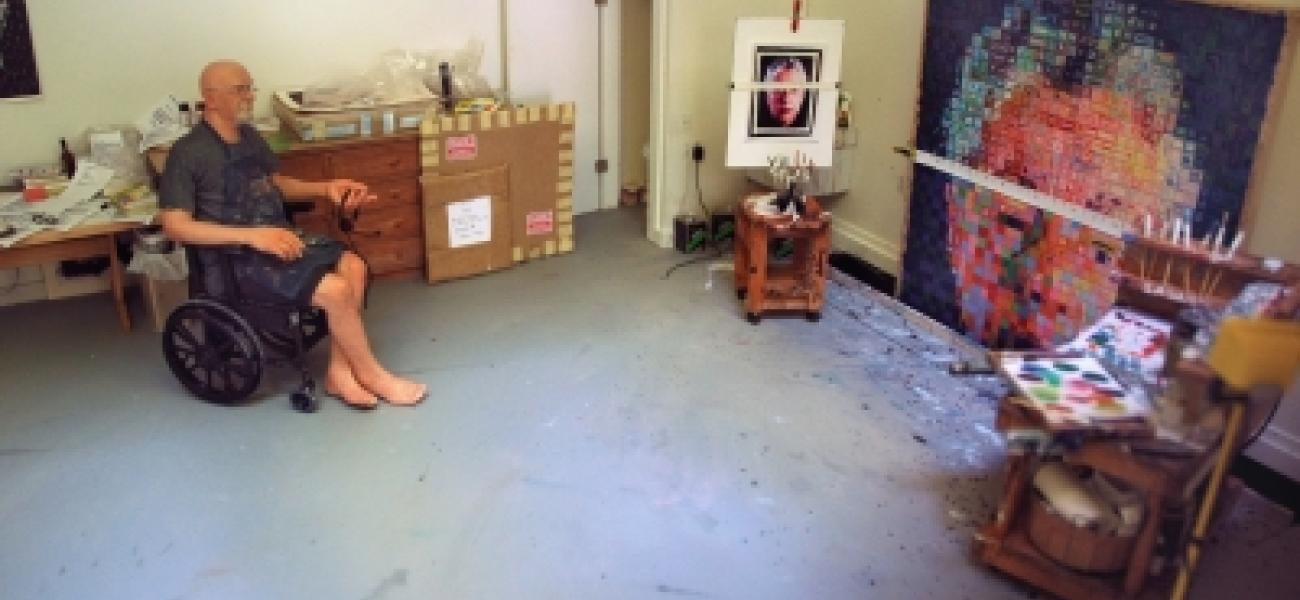Meticulous Miniature Replicas Reveal the Fanatical Side of Art


Featured on wired.com
Creating a scale replica of an interior space is now a mere matter of setting up the right kind of camera and pressing “print” — but Joe Fig does it the old-fashioned way. Or at least the especially hard way. He creates one-inch to one-foot scale miniatures of artists and their work spaces by hand, and in exacting detail.
For Fig, each piece is a kind of personal meditation on the creative process itself, a chance to explore in depth the environments where his favorite artists make the magic happen.
“Most painters have a table where they lay all their paints out and their brushes, and over years how they do that lends itself to represent some of their personality,” Fig says. “I was interested in the creative process, and how their studios were set up to help them with their own process, looking at the studio as a form of portraiture.”
The scaled-down dojos in Fig’s book Inside the Painter’s Studio feature mostly painters, but he’s since expanded to include sculptors too. In each diorama, lifelike shrunken figures of the artists work on mini-fied versions of their artworks in scenes that would’ve made Wayne Szalinkski proud. No detail is too small — the individual brushes, labels on the paint tubes, boxes of rubber gloves, each is carefully documented and saved into a database for future use.
“I’ll photograph the labels and all that, and then in Photoshop I’ll shrink it down to the right scale,” he says. “And then I save all that stuff. Like coffee cups — a lot of people use them to stir paint in, so I have like 10 different kinds of coffee cups.”
For each replica, Fig interviews the artists before paying a visit to their studio. He photographs them in 360 degrees as they stand or sit in a predetermined pose, giving him a kind of texture map that he can use to shape their likenesses. The figures are then sculpted out of a common polymer clay that hardens when baked in the oven. A painter by training, Fig uses his eye for balanced 2-D images to bring the 3-D spaces into better order, taking small liberties with things like lighting or the orientation of certain objects for the sake of a coherent image.
For the tiny works of art hanging from the tiny artists’ walls, Fig has found it’s most effective to use the same materials and methods they used. For example, the dribbled painting in the Jackson Pollock miniature — which Fig posed for in place of the departed artist — was re-created by Pollack-ly flicking and dripping paint onto the canvas with a toothpick. With the awesome exception of Lichtenstein, Fig’s ultimate goal is always realism, not idealization.
“When I go to their studio, I tell them that I don’t want them to clean up, I want them to be wearing the clothes they would usually wear in the middle of a work day,” says Fig. “As if they just stepped back to get a cup of coffee or take a look at their work — keep it really messy or neat if they work neat, but keep it natural. And I like to see paintings or works that are in process.”
Fig first got the idea for the series when he was recruited to make a bunch of snow globes as party favors for his sister-in-law’s wedding. The notion crystallized a thought he’d already been entertaining, about the difference between places where works of art are experienced — museums and galleries — and the spaces where those works were actually created. His idea developed into a way of giving viewer’s a god’s-eye view of artists in their workspaces, and it gave him a unique opportunity to actually speak with those artists and get their personal insights.
Another goal was to demystify the life of the artist, for better or worse. Many, when they think of artists at work, imagine some strange kind of wizardry taking place behind closed doors. Or, if you’re the parents of an artist (Fig’s included), the image of thankless toiling in obscurity can be a cause of real stress.
After working on the series for almost 15 years, Fig has learned to avoid romanticizing or succumbing to his own preconceptions about the artists’ lives as he recreates them. To this end, and to keep the process interesting and fresh for himself, he’s even given up on researching the artists before he interviews them.
“I’ve done it maybe once or twice, and I’ve found that when I start interviewing them I already know the answers,” he says. “Often I’m surprised when I meet them I’ll be like, ‘Oh so this is who you are?’”
A show of Fig’s work is opening on April 19th at the New Britain Museum of American Art in Connecticut. He’s represented by the Tierney Gardarin Gallery in New York.
Click here to see more images.